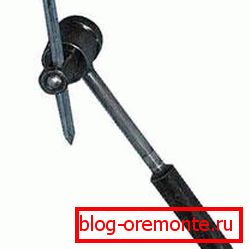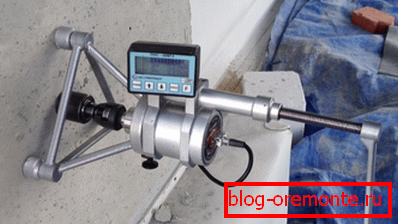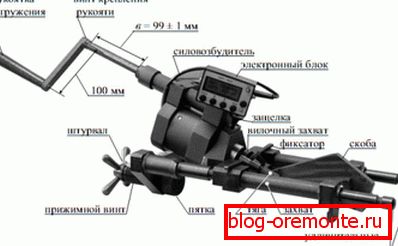Concrete strength testing using destructive and
Testing the strength of concrete is a mandatory measure in the implementation of capital construction. It is carried out for the most accurate and objective determination of the mechanical characteristics of the material, which allows to predict its behavior under the influence of various loads.
The importance of such tests and the correct interpretation of their results is difficult to overestimate. That is why experts recommend performing such checks in any case, regardless of the design purpose and scale of construction.

Factors affecting strength
Before analyzing what concrete strength tests according to GOST need to be carried out, it is worthwhile to deal with the indicators that determine the mechanical characteristics of the material.

The strength of concrete is its ability to perceive loads and stresses (tension, compression, bending, shear) and to resist them due to internal stress.
In this case, the material should not collapse in one form or another (splits, cracks, delamination).
- This characteristic is primarily provided by the composition of the material. The cement brand plays a key role in the formation of strength - the higher it is, the greater the load the structure can withstand.
Note! The price of low-quality formulations will be significantly less than the high-quality ones, so the desire to save money often arises. Sometimes cost reduction is indeed appropriate from both a financial and an engineering point of view, but more often it only reduces performance and shortens the life of the structure.
- In addition to cement, sand and filler itself, modifiers play an important role. These substances are introduced into the solution in relatively small volumes, but significantly change its properties, increasing fluidity, strength, accelerating the solidification, etc.
- For a more efficient and uniform distribution of loads in concrete, reinforcement is carried out - laying of metal wire and rods into the thickness of the material. This method of strengthening allows you to cope with low elasticity.

- Finally, the conditions for pouring and solidifying cement are also important. The fact is that for curing it is necessary to seal the material to remove air and hydrate the cement - the reaction of its granules with water. The speed of this process depends on the temperature, and therefore in the winter time, concrete must either be provided with high-quality thermal insulation, or additionally heated.
- Another aspect of the strength building process is the evaporation of a liquid. If the mortar dries faster than all the cement reacts with water, then the density of the concrete monolith will be heterogeneous. To avoid this, specialists artificially slow down the drying of the surface layers of the material, covering them with polyethylene or sacking and wetting them additionally.

As a result, we see that strength is an integral indicator, which is provided by the interaction of many factors. With the help of calculations, one can only approximately determine how stable the concrete will be, therefore, in difficult situations, instrumental control techniques are used.
Control methods
Method overview
To date, the strength is determined by several methods.
Among them:
- Examination of standard samples. To do this, cubic or cylindrical fragments are made from a solution with known proportions, which are dried in forms for 28 days. Then the samples are tested in a special press, after which a conclusion is made about their strength characteristics.

- Core research. Monolith is being cut down from frozen concrete (recently, drilling with diamond crowns has been increasingly used), which is then subjected to laboratory tests. As in the previous case, the most common is destructive testing under pressure.
Note! The disadvantage of this group of methods is the difficulty of sample extraction and the high cost of the procedure. In addition, if you choose the wrong point for sampling, there is a risk of reducing the bearing characteristics of the structure as a whole.
- Unbrakable control. This group of methods differs from the two previous ones in that it is not the concrete strength itself that is measured, but other indicators that are directly related to mechanical stability. Non-destructive testing techniques are less labor intensive, but their accuracy will be somewhat lower. However, for the solution of most engineering problems it is enough.
All these methods can be applied both in mass and in private construction. The order of control measures is regulated by GOST R - 53231-2008 "Monitoring and evaluation of the strength of concrete" and a number of other standards.

Fabrication and processing of samples
The most common method is to test the strength of concrete cubes.
To do this, perform the preparatory work:

- Several samples of concrete are taken from the batch of the solution, the volume of which will be sufficient to produce a series of samples of the desired size.
Note! When selecting a material, it should not be additionally mixed, removed or added to a filler, etc.
- By pouring into standardized forms, samples are made, the configuration and dimensions of which correspond to the type of study. As a rule, the filling of forms is carried out no later than 20-30 minutes after the selection.
Regulatory documents allow the use of such control samples:
| Type of study | Sample form | Linear dimensions, mm |
| Control of compressive or tensile strength | Cubic | From 100x100 to 300x300 |
| Cylindrical | Diameter is from 100 to 300, height is not less than size of diameter | |
| Axial tension control | Призматическая | From 100x100x400 to 300x300x1200 |
| Cylindrical | Diameter is from 100 to 300, height is not less than two sizes of diameter | |
| Bending Strength Control | Призматическая | From 100x100x400 to 300x300x1200 |
- It is also allowed to cut out monoliths from hardened concrete or to drill them out using diamond crowns.
- Extraction is carried out without prior moistening of the material, according to the schemes approved by GOST (given as illustrations in the article).

- The instruction allows for testing samples that have no visible defects - chips, cracks, holes with a diameter of more than 10 mm, etc.
Note! The presence of water flows on the samples obtained by casting into a mold is allowed, however, they should be removed with an abrasive before testing.
Destructive control
The laboratory tests the strength of concrete for various forms of control performs according to different technological schemes.
Compressive strength control is carried out as follows:
- Sample (cube or cylinder) set on the bottom plate of the press.
- The upper slab gradually lowers, creating a load on the concrete. The loading rate is assumed to be about 0.5-0.0 MPa / s.
- The sample is loaded until it collapses. In this case, the scheme of the split should comply with that specified in regulatory documents. Otherwise, the result is not taken into account, about which a corresponding entry is made in the journal (information may also be entered in the test report or another document).
Note! Tensile strength when splitting is tested according to a similar scheme, with the only difference that pressure is carried out using a special pointed nozzle.

The control of stretching on bending is performed differently:
- The stretched prism is laid in a horizontal position in a testing machine.
- We pressurize the central part of the prism with a rate of increase of the load of about 0.5 MPa / s.
- To take the sample into account during the inspection, it is necessary that the fracture line pass in the middle part of the sample, the fracture being inclined by no more than 150 from the vertical axis.

Based on the data obtained, the concrete strength is calculated. Sufficient accuracy of determination according to GOST is 0.1 MPa.
In principle, if you have access to a press with a device for controlling the load, you can evaluate the strength of the sample with your own hands.
For example, compression resistance is calculated using the following formula:
R = (F / A) * K, where
- R is the desired strength value.
- F is the destructive force in Newtons.
- A - sample area, mm2.
- K - correction factor to account for the moisture content of porous and cellular materials.
Unbrakable control
Basic methods
The methods listed above are fairly accurate, but they have a number of drawbacks. And most importantly - they do not allow to check the strength of the material in the whole structure, which is sometimes necessary. For this purpose, the so-called non-destructive testing is usually applied.

As we noted above, it is not the material strength itself that is measured, but indirect indicators.
These include:
- Measurement of parameters of rebound of solid objects from the surface of concrete. This technique is quite common and is used in various modifications of sclerometers (the example in the image above).
- Measurement of concrete deformation parameters in the place of impact (most often, the strike is made with a steel ball of fixed diameter and mass). To implement this technique, the so-called "Kashkarov hammer" is used.

- Accounting for pulse energy when exposed to a special device hammer on the concrete surface.
- Measurement of the speed of propagation of ultrasound in the thickness of the material. This technique is optimal for detecting hidden defects in the inner layers of concrete.
Taking into account the indirect nature of these methods, experts recommend using them in combination, harmonizing the results to obtain a single picture.
Separation method
A separate group of techniques are the so-called direct methods of non-destructive testing. These include tear and tear checks. They show satisfactory results, because their description is worth staying separately.
Tear-off control is carried out as follows:
- A steel disc is glued to the surface, connected to a mechanism that provides a metered tearing force.
- For gluing in accordance with the requirements of GOST, the compositions ED16 or ED20 are used.
- After polymerization of the composition, a force is applied to the disk until a fragment of concrete is torn off. Impact parameters are measured, on the basis of which a conclusion is made about the mechanical characteristics of the solution.

Note! In the Russian Federation, this technique is rarely used, since climatic conditions in most parts of the country do not provide a complete polymerization of glue. At the same time, its effectiveness is sufficient to use the tear-off control as an indicative or auxiliary one.
Splitting method
One of the modifications of the tear-off control is the method of splitting the ribs:
- A special tool is installed on the outer corner of the structure, the working part of which resembles a clamp. The moving parts are clamped with a screw until the tool is securely fixed.
- Then through the grip force is applied, which leads to chipping of the rib at the point of contact with the clamp part. The magnitude of the effort concludes the strength of concrete.
- The disadvantage of this technique is obvious: you can control the characteristics far from everywhere. That is why a few years ago a modification of such a device was put on the market, which can be used on level areas. At the same time for fixing the tool used dowel.

Note! To operate such a device, a sufficiently powerful impact drill or perforator is necessary, which significantly complicates the control process.
Conclusion
The above-described methods for testing the strength of concrete, provided it is properly implemented, demonstrate sufficient effectiveness. Their use (as we have already noted, for the best results, it should be comprehensive) allows us to evaluate the properties of the structure, predict its response to various loads and, if necessary, plan activities to eliminate the deficiencies.
Of course, in practice only professionals can cope with this, however, a newcomer who has carefully studied the video in this article will be able to make at least a rough estimate.